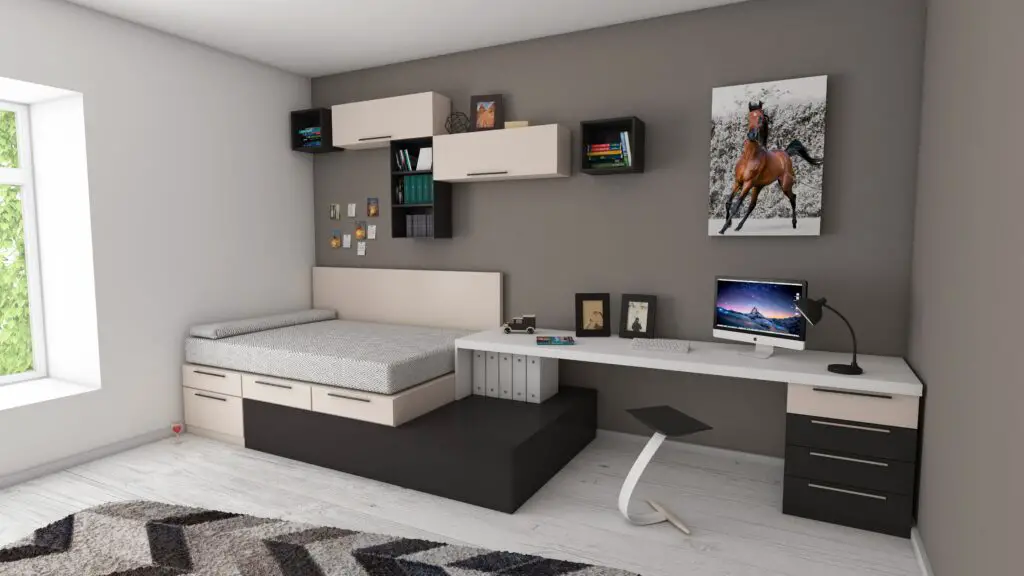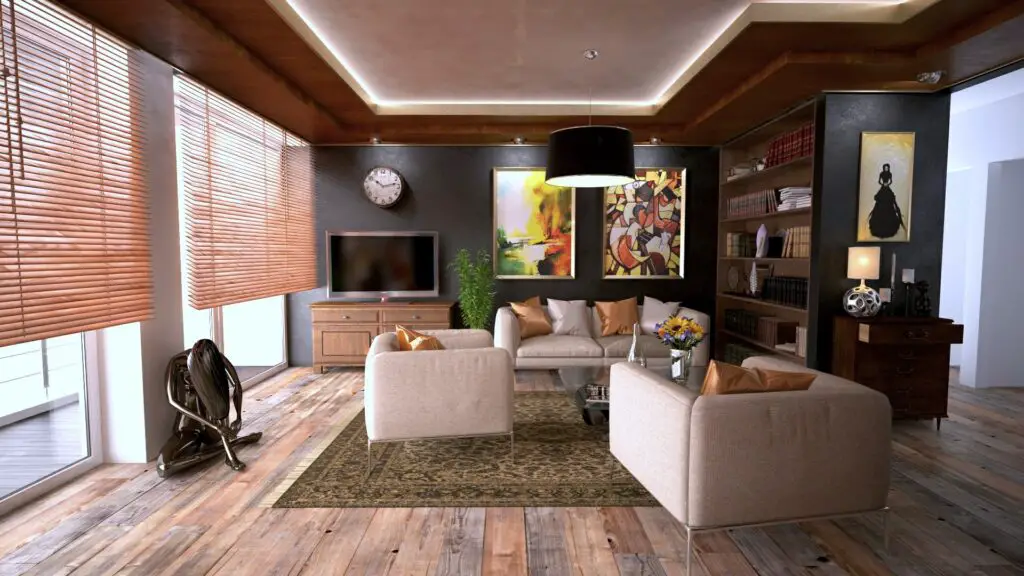Smart home technology has revolutionized the way we interact with our living spaces. From controlling the lighting and temperature to managing security and entertainment systems, smart home devices offer convenience, comfort, and energy efficiency. If you’re planning a room renovation, incorporating smart home technology can be a game-changer.
This guide will walk you through how to incorporate smart home technology in a room renovation, ensuring that you create a modern and efficient living space tailored to your needs and preferences.
I. Assessing Room Needs and Goals

Before diving into the world of smart home technology, it’s essential to assess the needs and goals of the room you’re renovating. Consider the purpose of the room and the specific functionalities you want to achieve with smart technology. Are you transforming a bedroom into a smart home office or upgrading your living room to a smart entertainment hub? Understanding your goals will help you make informed decisions throughout the renovation process.
II. Researching Smart Home Technology Options
With a plethora of smart home devices available on the market, it’s crucial to research and explore your options. Look into different smart home systems and devices that align with your goals and preferences. Consider factors like compatibility with existing infrastructure and future scalability.
Some popular smart home categories to explore include lighting automation, climate control, entertainment and media, security and safety, and voice assistants. Take the time to read product reviews and compare features to make the best choices for your room renovation.
III. Planning the Room Layout
As you progress with your room renovation, it’s essential to consider the room layout and how smart home devices will fit into the space. Evaluate the current layout and functionality of the room and identify potential areas where smart devices can be installed. Take into account wiring and connectivity requirements for devices such as smart switches, thermostats, or security cameras. Proper planning at this stage will ensure seamless integration of smart technology into your room.
IV. Selecting Smart Home Devices

Once you have a clear idea of the devices you want to incorporate, it’s time to select specific smart home devices for your room renovation. Here are some popular options to consider:
A. Lighting Automation
Smart lighting can transform the ambiance of any room. Consider options like smart bulbs, which can be controlled remotely, dimmed, or even changed colors to suit your mood. Smart switches are another alternative, allowing you to control multiple lights from a single switch.
B. Climate Control
Smart thermostats offer precise temperature control, energy-saving features, and the convenience of remote access through mobile apps. Look for thermostats that integrate with your existing HVAC system and provide energy usage reports to help you make informed decisions.
C. Entertainment and Media
Upgrade your room’s entertainment capabilities with smart TVs that offer streaming options and voice control. Wireless speakers, such as those compatible with popular virtual assistants, can provide a surround sound experience without the clutter of wires. Media streaming devices like Apple TV or Chromecast can easily integrate with your existing entertainment setup.
D. Security and Safety
Enhance the safety of your room with smart locks, allowing you to lock and unlock doors remotely or via biometric authentication. Video doorbells provide real-time video feeds and motion detection, allowing you to monitor and interact with visitors from anywhere. Motion sensors and security cameras add an extra layer of protection and peace of mind.
E. Other Considerations
Don’t overlook other smart home devices that can further enhance your room’s functionality. Smart blinds or curtains can be automated to open or close based on your preferences or set schedules.
Voice assistants like Amazon Alexa or Google Assistant can serve as the central control hub for your smart devices, allowing you to control them with simple voice commands. Explore the compatibility of these devices with your chosen smart home system.
V. Ensuring Connectivity and Compatibility with Smart Home Technology

To ensure the smooth functioning of your smart home devices, it’s essential to consider connectivity and compatibility factors. Assess the strength and coverage of your existing Wi-Fi network to ensure reliable connections throughout the room.
Check the compatibility of your devices with the chosen smart home hub or system, as not all devices work with all systems. Additionally, prioritize network security by setting strong passwords and considering additional measures like firewall protection.
VI. Installation and Setup
While some smart home devices can be installed and set up by homeowners, others may require professional assistance, particularly when dealing with electrical wiring. Consider hiring professionals to ensure safe and proper installation.
Follow the manufacturer’s instructions for each device and configure settings according to your preferences. In case of any connectivity issues, troubleshoot by ensuring proper device placement and optimizing network connectivity.
VII. Integrating and Automating Smart Home Systems
Once your smart home devices are installed and set up, it’s time to integrate and automate them to maximize their potential. Most smart home systems offer options to create routines, schedules, and custom scenes.
Set up routines to automate tasks like turning on lights and adjusting temperature settings based on specific triggers or schedules. Create custom scenes to set the ambiance for different activities like movie nights or relaxation. Explore voice control options offered by voice assistants to operate your smart devices hands-free.
VIII. Testing and Fine-tuning Smart Home Devices

After integrating and automating your smart home systems, it’s crucial to test their functionality and performance thoroughly. Verify that each device operates as expected and troubleshoot any issues that may arise.
Adjust settings and configurations as needed to optimize performance and ensure a seamless user experience. If you encounter complex setups or challenges, consider seeking professional assistance or consulting online forums and communities for guidance.
IX. User Education and Training
To fully leverage the capabilities of your smart home technology, it’s essential to educate yourself and other users about the devices and their features. Provide user manuals and documentation for each device, highlighting key functionalities and troubleshooting tips.
Consider offering training sessions or tutorials to help users familiarize themselves with the technology and its potential. Address common user questions and concerns to ensure a smooth transition into smart living.
X. Maintenance and Upgrades
Smart home technology is continuously evolving, with firmware updates and new features being released regularly. To keep your system running smoothly, make it a habit to update device firmware and software. Regularly monitor system performance and address any issues promptly.
Consider future upgrades and expansions as your needs change and new technology emerges. Staying up to date with the latest advancements will help you make the most of your smart home technology.
Conclusion
Incorporating smart home technology into your room renovation can significantly enhance your living experience. From increased convenience and comfort to improved energy efficiency and security, the benefits are substantial.
By following the steps outlined in this guide, you can confidently embark on your journey to create a modern, efficient, and connected living space. Embrace the possibilities of smart living and enjoy the numerous advantages that smart home technology has to offer.
FAQs (Frequently Asked Questions)
1. How can smart home technology improve energy efficiency in a room renovation?
Smart home devices like smart thermostats and lighting automation systems allow for precise control over energy consumption. By setting schedules, automating processes, and monitoring usage, you can optimize energy efficiency and reduce utility costs.
2. Can you integrate different smart home systems and devices?
Yes, many smart home systems and devices are designed to be compatible with each other. Ensure that the devices you select are compatible with your chosen smart home system or hub to integrate them seamlessly.
3. Are smart home devices secure?
Smart home devices have evolved to include robust security features. However, it’s essential to prioritize network security by setting strong passwords, enabling encryption, and keeping firmware and software up to date.
4. How can you troubleshoot connectivity issues with smart home devices?
If you encounter connectivity issues, ensure that your Wi-Fi network is strong and covers the entire room. Verify device placement and proximity to the router. You can also try restarting devices or seeking assistance from online forums and communities.
5. Can you control smart home devices while away from home?
Yes, most smart home devices offer remote access through dedicated mobile apps. As long as your device is connected to the internet, you can control and monitor it from anywhere using your smartphone or tablet.



